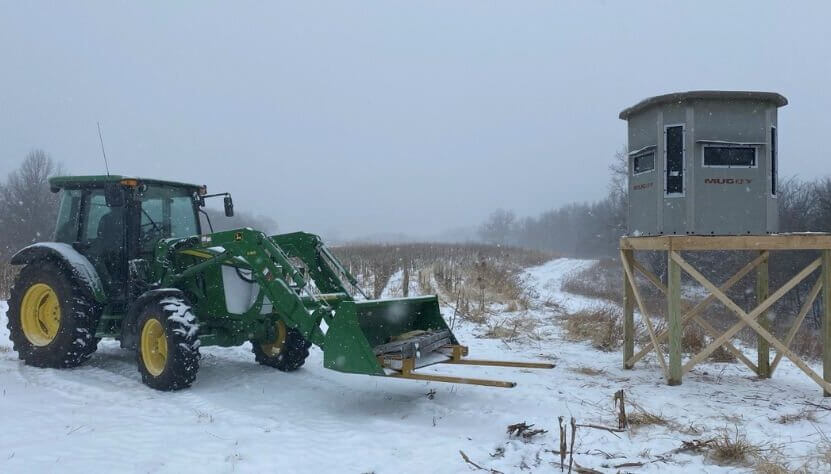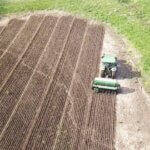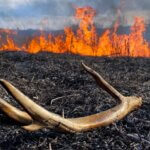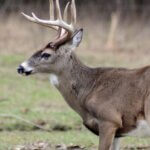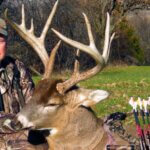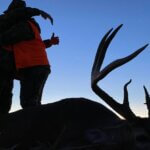Editor’s Note: Terry and Mark Drury have owned Drury Outdoors for the last almost 35 years, and today produce and direct several TV shows, including “Thirteen,” “Natural Born,” “Bow Madness” and “Critical Mass: Evolve.” They’ve consistently been able to take older-age-class bucks every year on the properties they own and manage for wildlife. Terry Drury shares their deer strategies. Also many states offer free assistance through biologists in the states’ Technical Assistance Units about improving properties for deer.
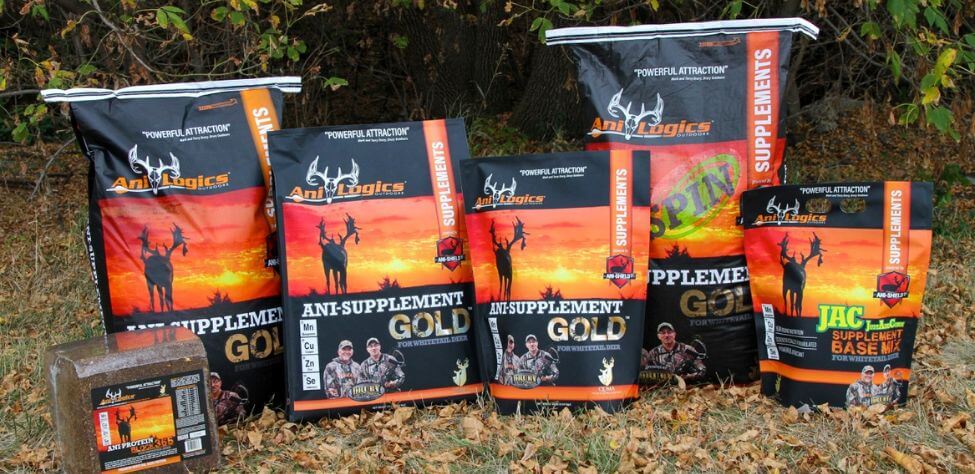
Over the years, I’ve had hunters ask me, “How can you hold a 4.5-year-old buck on your property, until it becomes a 6.5-year-old buck or older?” You need to:
- Provide as much food, cover and security as possible for the bucks on your lands.
- Have as few hunter intrusions as possible, and create sanctuary areas. I believe the number-one reason many hunters can’t hold bucks on their lands to allow them to reach those older-age classes is because of hunter intrusion. To take these bucks, we have to go into areas we plan to hunt, check our tree stands and shooting blinds and work with our trail cameras. All of that is intrusion. So, we try to go into our stand sites or camera sites in the middle of the day when the bucks should be bedded-up and not be traveling to food or water. We also don’t go into those places when we’ve got a wrong wind that will carry our human odor to where the bucks may be bedded-down. By using the new Reconyx cameras, the only time that we have to go in to check our trail cameras is when a battery goes out or some damage may have occurred to the camera.
On all the properties we have to hunt, we try to stay out of most of that land all year long, unless we shoot a buck that runs into one of our sanctuary areas. We’ve noticed something that many other hunters already know that most of the time the biggest bucks on any property are taken from regions where hunters usually don’t hunt. So, by giving bucks plenty of sanctuary, we drastically increase our odds of keeping those bucks on our lands. Again, I truly believe that intrusion is the number-one reason that older-age-class bucks leave properties with a lot of hunting pressure and set-up homes in areas where they’ll rarely if ever see a hunter during hunting season.
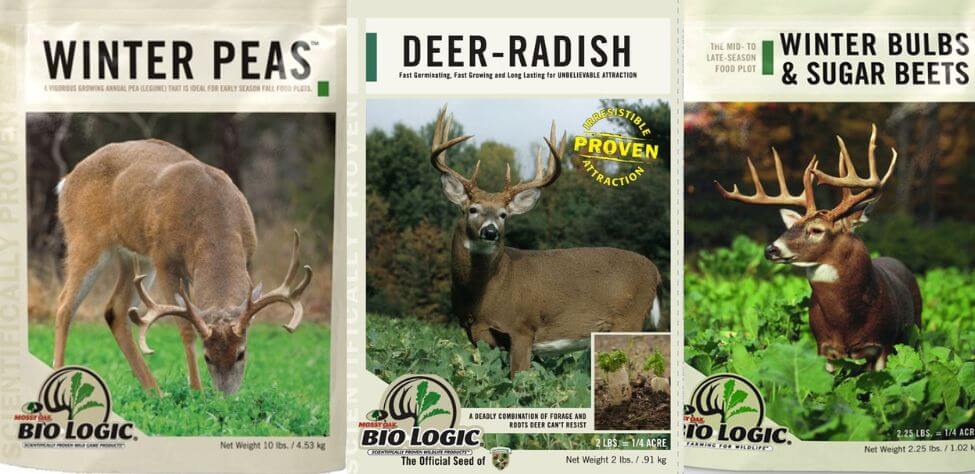
Hunt Stands Carefully
A follow-up question by people often is, “How often will you hunt a stand where you’ve got trail-camera pictures of a buck 6.5 years old or older coming past your trail camera?” I’ll hunt that stand as often as I have a favorable wind to hunt from that stand site, and as long as the weather and the moon indicate that the buck should be on his feet and moving. For instance, if we have a northwest wind and I’m hunting an older-age-class buck with a stand facing northwest, I’ll hunt that buck every time I have that northwest wind. But I won’t go to that stand site when I have a southwest wind, or when the wind’s is swirling, and there’s any possibility that that buck will pick-up my scent. If I have a south wind, I won’t hunt that buck.
As long as that older-age-class buck doesn’t know I’m hunting him, I have a better-than-average chance to take him. If that older-age-class buck smells me, however, more than likely, he’ll move to another zip code. I believe if you only hunt an older-age-class buck when the moon, the weather and the barometric pressure are right, you drastically increase your odds for being able to harvest that buck.
Tomorrow: What Conditions Help Take Older Deer

How to Hunt and Take Big Buck Deer on Small Properties
In this book, you’ll hear from 14 hunters who either have gained permission or leased properties as small as six acres to as much as 250 acres, and how they consistently take older-age-class bucks off these little lands.
VERSIONS: AUDIBLE, KINDLE & PRINT

Jim Crumley’s Secrets of Bowhunting Deer
Using a black magic marker and a gray work jumpsuit, Jim Crumley of Buchanan, Virginia, drastically changed the nature and purpose of hunting camouflage when he created the first sportsman’s camouflage – Trebark. Crumley’s love of bowhunting and his desire to be more invisible changed hunting clothing forever.
In this hunting guide, he shares the wisdom that he’s learned throughout his lifetime about how to be a hunter, how to find a deer lease, how to scout for deer, and more.
Special features include how to:
- Have a magic 60 acres to hunt
- Decide the best equipment to use
- Find deer year-round
- Locate land to hunt
- Know the best place to put your tree stand
- Get bucks within bow range
VERSIONS: AUDIBLE, KINDLE & PRINT

How to Hunt Deer Like a Pro
How do you know if the land you hunt has a trophy deer on it? Wildlife manager Bob Zaiglin, of Uvalde, Texas and Jim Crumley, the father of modern-day hunting camouflage, tells you how to find out. GPS can make finding and taking that trophy buck easier. This hunting guide will teach you how to hunt big bucks where no one else can find them, how to call deer, and how to become versatile as a deer hunter, so that if one deer tactic doesn’t work, another one will.
In the chapter, “How to find Bucks at Scrape,” Dr. Keith Causey, retired professor of Wildlife Science at Auburn University, describes the best way to hunt a scrape.
Brad Harrison of Neosho, Missouri, is a nationally-known videographer, professional deer hunter and master at calling deer. Another master is Will Primos of Primos Game Calls. These two experts will tell the best deer calls and when to use them in this book.
And for over 20 years, Bo Pitman, lodge manager of White Oak Plantation, has been studying deer movement patterns. He explains what types of conditions are best for predicting deer movement.
VERSIONS: AUDIBLE, KINDLE & PRINT

Deer hunting and deer hunters are drastically changing each year. To learn new techniques for hunting deer and have more places to hunt, I’ve interviewed some of the best deer hunters in the nation and share their tactics in How to Hunt Deer Like a Pro: Volume II.
In Chapter 10, Jacob Lamar tells you his tactics for consistently taking older-age-class bucks on public lands in several states. Chapter 11, Bob Walker explains how to find places on public lands where you can hunt that 99 percent of the other hunters never have considered hunting. The Bonus Chapter with David Ramey tells you how, where, when and with what equipment to take big Kansas bucks on public lands by hunting in 100-degree weather when others won’t hunt.
Chapter 13, Mark Drury, his family and his guests take mature bucks every season by having more small places to hunt rather than one large property. Drury explains the strategy of having satellite farms to hunt that only may be 50-150 acres each or less. Chapter 15, Pat Reeve, who hunts far-northern states and Canada, says, “I don’t like hunting for mature bucks until the weather is 20 degrees or less.” Chapter 4, Dr. Larry Marchinton says that funnels are the most-reliable stand sites to hunt for big bucks and tells why.
VERSIONS: AUDIBLE & PRINT



